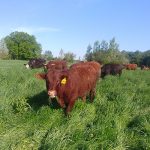Your Grass-Fed Beef Probably Isn’t
Not long ago, a customer stopped by after having recently visited a major whole food grocer. The store had beef in the display marked 100% grass-fed beef. The customer asked the guy behind the counter if the cattle had ever been fed grain. Sure enough, they had been finished on grain.
How is that 100% grass-fed beef?
How can they claim 100% grass-fed when they’re grain fed? Those cattle were 100% grass-fed until they 100% weren’t. And just to be clear, feeding grain to ‘finish’ cattle will negate any benefit of ever feeding that animal a grass-based diet. So much for 100% grass-fed.
I can tell you that if you’ve purchased grass fed beef in the store it most certainly wasn’t grass-fed at all. Why? Because the term grass-fed is not regulated. Meat and dairy producers can call anything grass-fed because there’s no accepted definition of what is grass-fed and what isn’t.
When I tell most customers this they respond with, “Right, they probably gave them one blade of grass so they could call them grass-fed.” But that misses the point. Why bother to give them one blade of grass at all? People assume there has to be at least some level of credibility to claims on labels but that’s not always true. What most people fail to understand is that if a major food corporation can get by with putting something on a label that will sell their product they will do it, no matter how misleading or false it might be, as long as they won’t face litigation for it. This is absolutely true with grass-fed. That claim can be on any label of literally anything! “Grass-fed” can be on the exact same CAFO beef as the next shelf over that’s half the price.
It means that the likelihood of the 100% grass-fed beef you bought at a major grocery store actually being grass-fed is almost nothing.
I can tell you that out of all the grass-fed beef I’ve seen in stores recently, I’ve yet to find one that was actually grass-fed. I’ve raised grass-fed beef for the last 10 years and I can tell mainly by the look of the beef — but also by the price. It costs a lot more to raise beef on a grass only diet. So much more, that most people aren’t willing to pay the cost of a truly grass-fed product. Instead, stores sell falsely labeled meat and dairy to meet the demand for grass-fed products, at a price they think the consumer will pay. Unfortunately, it only gives consumers a false sense that grass-fed beef can be sold for half of what it costs to raise beef that really is 100% grass fed. This is why in a recent Facebook post somebody called our prices “ridiculous.” They are used to being fooled by false labels on ridiculously cheap food. What’s ridiculous is what goes into that ridiculously cheap junk they call ‘food.’ If you knew what was in it you wouldn’t eat it!!
What’s also sad about the whole food grocer I mentioned earlier is that the same grocer used to carry AGA certified grass-fed beef. AGA stands for American Grass-Fed Association. The AGA is currently the only grass-fed certification in the United States. It is one of the few ways to know that beef or dairy is actually grass-fed. If you bought beef that is AGA certified you can be assured that it actually is 100% grass-fed beef and not a CAFO knockoff. That whole food grocer dropped their AGA certified beef along with their price. What was once AGA certified 100% grass fed ground beef that sold for $9.99 per pound is now feed-lot-grain-fed ground beef marked as 100% grass-fed beef that sells for $6.99 per pound. And yes, grain-feeding beef will make it that much cheaper to raise which is why almost everyone does it. And you can see why they no longer have AGA certified beef.
The best way to get grass-fed beef is to find a farm you can trust, ask them how they raise their beef and what they feed their cattle, and buy it straight from them. Make sure to ask them if their cattle have ever been given grain. Most small farmers will happily tell you how they raise their animals.
At BP Farms, our definition of grass-fed is the same as the AGA’s. 100% Grass Fed and Grass Finished means our cattle eat grass and forage on pasture or hay when pasture isn’t available and never eat any grain or soy. Really! I mean they have never ever received any grain at all — and neither were the parents of the animal for many generations. This makes the most nutritious and flavorful beef. That is was 100% grass-fed should mean.
For more information about 100% grass-fed beef from the organic beef experts at BP Farms, please contact us here or click here to order online.






